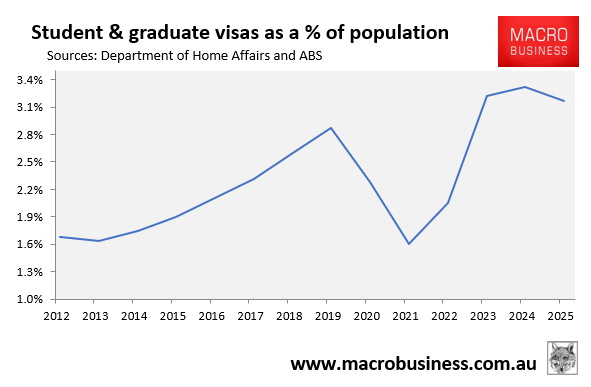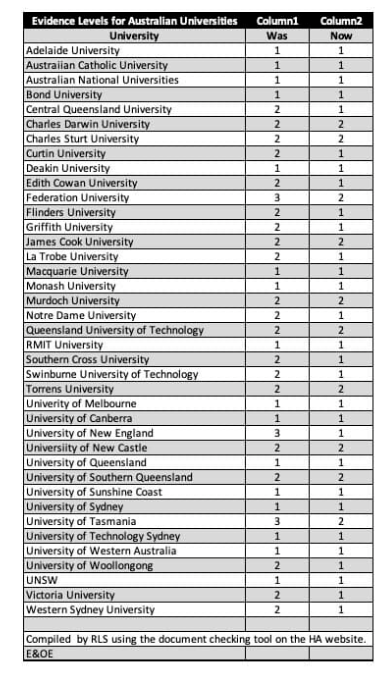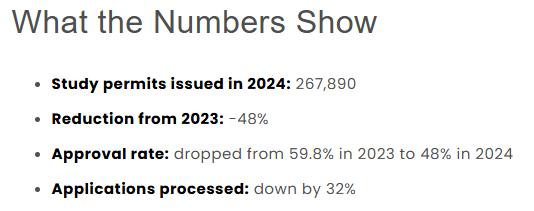I explained this week how the Albanese government has taken specific actions to bolster the flow of international students into Australia.
These actions come as the number of international students and graduates in Australia is tracking at a historically high 3.2% of the nation’s population as at Q3 2025, up from the pre-pandemic peak of 2.9%.

The true figure is even higher, given the large numbers of former international students holding bridging visas.

The measures taken to lift student numbers include the following under Ministerial Direction (MD) 115:
1/ Raising the planning level for international students by 25,000 for 2026 to 295,000. However, this is a soft cap only, with institutions allowed to exceed their allocation by 15% before student visa approvals are slowed.

2/ Risk weightings for students from South Asia and some other nations have been lowered. This means applicants from countries like India, Nepal, Bangladesh, and Sri Lanka are now considered lower risk, resulting in faster processing and fewer evidentiary burdens (e.g., less financial documentation or fewer English language test results) when applying for student visas.
3 / Around a dozen Australian universities have been assigned lower risk weightings for international student recruitment, meaning they receive faster and easier visa approvals with fewer evidentiary requirements (e.g., less financial documentation, fewer English language test results, etc).

University risk-weightings reduced
In short, MD 115 appears designed to accelerate international student recruitment in Australia and will work to increase overall student numbers and net overseas migration.
These reforms have also arrived at the same time as Canada has severely cut back student visas.
Canada introduced a two‑year cap on international student permits in January 2024 to sharply reduce intake—about 35% fewer than 2023 levels—mainly to ease housing pressures, address fraud in the system, and rebalance higher education capacity.

In practice, approvals fell even further to just under 268,000 permits in 2024, a 48% drop compared to 2023.

Canadian study permits collapse
As a result, international students are increasingly looking to alternative destinations like Australia, which the Albanese government seems keen to accommodate.
Already, Australia’s Department of Home Affairs (DHA) has issued a “Student Visa Integrity Alert” warning that visa fraud is on the rise, driven by students from South Asia.
The DHA’s alert warns of “emerging risks” involving prospective students and education agents “seeking to exploit Australia’s immigration system”.
“Multiple reports of student visa applicants using fraudulent passport details to gain Confirmation of Enrolments (CoEs) with Australian Education Providers (EPs), particularly in the Higher Education sector”, DHA notes.
“These fraudulent activities are circumventing risk and evidentiary requirements, undermining the integrity of the Student Visa Program”.
DHA also noted that “agents are being incentivised by some EPs to facilitate applications regardless of supporting documentation to drive demand for their institution, irrespective of the long-term effect on their attrition/retention rates”.
“These factors are noted, but not limited to, South Asian markets, which are showing current growth”, DHA says.
The DHA also warns that the easing of risk-weightings for universities and countries has been used by “some bodies” as “evidence that Australia’s Student Visa Program is open to non-genuine students. This is an intentional misrepresentation of the Evidence Level Framework, and education provider obligations”.
Clearly, under MD 115, the Albanese government has lowered the barrier to studying in Australia and incentivised visa fraud.

